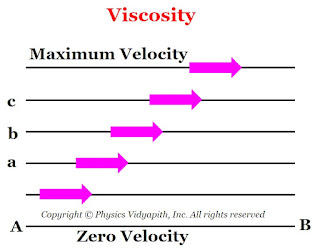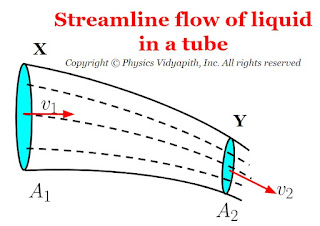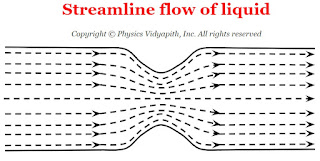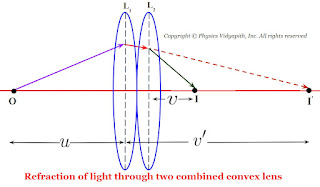Analytical expression of intensity for interference due to Young's double slit:
Let us consider two waves from slit $S_{1}$ and $S_{2}$ having amplitude $a_{1}$ and $a_{2}$ respectively superimpose on each other at point $P$ . If the displacement of waves is $y_{1}$ and $y_{2}$ and the phase difference is $\phi$ then
$y_{1}=a_{1} \: sin \omega t \qquad(1)$
$y_{2}=a_{2} \: sin \left( \omega t + \phi \right) \qquad(2)$
According to the principle of superposition:
$y=y_{1}+y_{2} \qquad(3)$
Now substitute the value of $y_{1}$ and $y_{2}$ in the above equation $(3)$
$y=a_{1} \: sin \omega t + a_{2} \: sin \left( \omega t + \phi \right)$
Let
$a_{1} + a_{2} \: cos \phi = A\: cos\theta \qquad(5)$
$a_{2} \: sin \phi = A\: sin\theta \qquad(6)$
Now the above equation $(4)$ can be written as
$y= A\: cos\theta \: sin \omega t + A\: sin\theta \: cos \omega t $
$y= A \left( cos\theta \: sin \omega t + sin\theta \: cos \omega t \right)$
$y= A \: sin \left( \omega t + \theta \right) \qquad(7)$
This is the equation of the resultant displacement of the waves from slit $S_{1}$ and $S_{2}$ at point $P$ on the screen.
Now square the equation $(5)$ and equation $(6)$ and then add to them so
$ A^{2} = a^{2}_{1} + a^{2}_{2} + 2a_{1} \: a_{2} \: cos\phi \qquad(8)$
$ A = \sqrt{ a^{2}_{1} + a^{2}_{2} + 2a_{1} \: a_{2} \: cos\phi }\qquad(9)$
Resultant Intensity:
The resultant intensity at point $P$ due waves from slit $S_{1}$ and $S_{2}$ can be find by flollowing formula:
$I=A^{2}$
Now subtitute the va;ue of $A^{2}$ from equation $(8)$ in the above equation
$I= a^{2}_{1} + a^{2}_{2} + 2a_{1} \: a_{2} \: cos\phi \qquad(10)$
$I= I_{1} + I_{2} + 2\sqrt{I_{1} \: I_{2}} \: cos\phi \qquad(11)$
Constructive Interference:
For constructive interference the $cos\phi$ should be equal to +1 i.e. $cos\phi =1$
Phase Difference in Constructive Interference:
We know that for constructive interference $cos\phi =1$
$cos\phi = cos( 2n\pi)$
$\phi = 2n\pi \qquad(12)$
Path difference in Constructive Interference:
We know that the path difference
$\Delta x = \frac{\lambda}{2 \pi} \phi$
Now subtitute the value of $\phi $ from equation $(12)$ in the above equation
$\Delta x = \frac{\lambda}{2 \pi} 2n\pi$
$\Delta x = n \lambda \qquad(13)$
Resultant Amplitude due to Constructive Interference:
For constructive interference, the resultant amplitude is maximum at point $P$. So from equation $(9)$
$ A_{max} = \sqrt{ \left (a_{1} + a_{2} \right)^{2}} $
$ A_{max} = \left( a_{1} + a_{2} \right) \qquad(14)$
For constructive interference, the resultant amplitude of the waves is the sum of the amplitude of individual waves.
Resultant Intensity due to Constructive Interference:
For constructive interference, the resultant intensity is maximum at point $P$. So from equation $(10)$
$I_{max}=\left( a_{1} + a_{2} \right)^{2} \qquad(15)$
From equation $(11)$
$I_{max}= I_{1} + I_{2} + 2\sqrt{I_{1} \: I_{2}} \qquad(16)$
Destructive Interference:
For destructive interference the $cos\phi$ should be equal to -1 i.e. $cos\phi = -1$
Phase Difference in Destructive Interference:
We know that for destructive interference $cos\phi = -1$
$cos\phi = cos \left( \left( 2n \pm 1 \right)\pi \right)$
$\phi = \left( 2n \pm 1 \right)\pi \qquad(17)$
Path difference in Destructive Interference:
We know that the path difference
$\Delta x = \frac{\lambda}{2 \pi} \phi$
Now subtitute the value of $\phi $ from equation $(17)$ in the above equation
$\Delta x = \frac{\lambda}{2 \pi} \left( 2n \pm 1 \right)\pi$
$\Delta x = \left( 2n \pm 1 \right) \frac{\lambda}{2} \qquad(18)$
Resultant Amplitude due to Destructive Interference:
For the destructive interference, the resultant amplitude is minimum at point $P$. So from equation $(9)$
$ A_{min} = \sqrt{ \left (a_{1} - a_{2} \right)^{2}} $
$ A_{min} = \left( a_{1} - a_{2} \right)$
For constructive interference, the resultant amplitude of the waves is the difference in amplitude of individual waves.
Resultant Intensity due to Destructive Interference:
For the destructive interference, the resultant intensity is minimum at point $P$. So from equation $(10)$
$I_{min}=\left( a_{1} - a_{2} \right)^{2}$
From equation $(11)$
$I_{min}= I_{1} + I_{2} - 2\sqrt{I_{1} \: I_{2}} $
$y=a_{1} \: sin \omega t + a_{2} \left( sin \omega t \: cos \phi + cos \omega t \: sin \phi \right) $
$y=a_{1} \: sin \omega t + a_{2} \: sin \omega t \: cos \phi + a_{2}\: cos \omega t \: sin \phi $
$y= \left( a_{1} + a_{2} \: cos \phi \right) \: sin \omega t + a_{2} \: sin \phi \: cos \omega t \qquad(4)$
$ A^{2} \: sin^{2}\theta + A^{2}\: cos^{2}\theta = \left( a_{1} + a_{2} \: cos \phi \right)^{2} + a^{2}_{2} \: sin^{2} \phi $
$ A^{2} \left( sin^{2}\theta + cos^{2}\theta \right) = a^{2}_{1} + a^{2}_{2} \: cos^{2} \phi + 2a_{1} \: a_{2} \: cos\phi + a^{2}_{2} \: sin^{2} \phi $
$ A^{2} = a^{2}_{1} + a^{2}_{2} \left( cos^{2}\phi + sin^{2}\phi \right) + 2a_{1} \: a_{2} \: cos\phi $
$ A_{max} = \sqrt{ a^{2}_{1} + a^{2}_{2} + 2a_{1} \: a_{2} } \qquad \left( \because cos\phi =+1 \right)$
$I_{max}= a^{2}_{1} + a^{2}_{2} + 2a_{1} \: a_{2} \qquad \left( \because cos\phi =+1 \right)$
$ A_{min} = \sqrt{ a^{2}_{1} + a^{2}_{2} - 2a_{1} \: a_{2} } \qquad \left( \because cos\phi =-1 \right)$
$I_{min}= a^{2}_{1} + a^{2}_{2} - 2a_{1} \: a_{2} \qquad \left( \because cos\phi =-1 \right)$

















